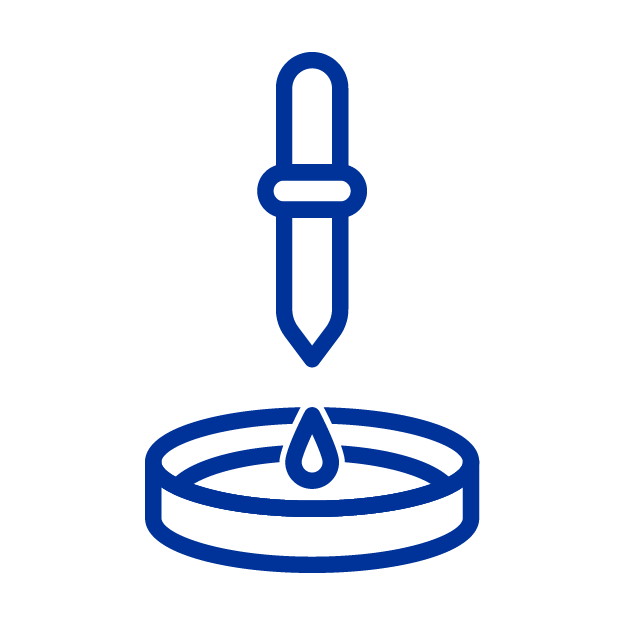PFAS IN WASTEWATER SLUDGE & BIOSOLIDS
Home / PFAS Matrices / Wastewater Sludge & Biosolids
PACE® HELPS PROTECT LOCAL COMMUNITIES WITH ADVANCED TESTING SERVICES FOR ANALYZING PFAS IN COMPLEX MATRICES LIKE WASTEWATER SLUDGE AND BIOSOLIDS.
WHAT ARE BIOSOLIDS?
Biosolids, sometimes referred to as wastewater sludge, are a byproduct of wastewater treatment. Since traditional wastewater processes do not remove PFAS and can even convert PFAS precursors into terminal PFAS, these biosolids may contain PFAS.
Land-applying biosolids as soil amendments may seem like an ecological and economic idea, but when these biosolids are contaminated with PFAS, they can contaminate soil and groundwater and introduce PFAS into the food supply. Pace® can assess PFAS contamination in biosolids before application. If biosolids have been routinely applied, we can also assess their impact on local soil, groundwater, and surface waters.
EPA ASSESSES THE RISK OF PFAS IN BIOSOLIDS
Under the Clean Water Act (CWA), the EPA is authorized to set limits and monitoring/reporting requirements for PFAS in biosolids if there is sufficient evidence of harm to human health or the environment. The agency’s 2021-2024 Strategic Roadmap calls for finalizing a risk assessment for PFOA and PFOS by winter 2024, paving the way for future rulemaking.
NPDES PROVIDES BIOSOLID GUIDANCE
The National Pollutant Discharge Elimination System (NPDES) is a permitting program designed to regulate the discharge of pollutants into the waters of the U.S. (WOTUS). States can petition the U.S. EPA to administer their own NPDES program, and the majority of states have received partial or full approval. On December 5th, 2022, the EPA released a memo detailing guidance to states for NPDES permitting. In addition to the usual focus on PFAS in wastewater discharge, this latest memo includes significant guidance on the assessment of PFAS in biosolids.
STATES TAKE A CLOSER LOOK AT BIOSOLIDS
After finding PFAS in agricultural products, such as milk and eggs, several states are reexamining the practice of using biosolids produced by wastewater treatment as soil amendments. Unfortunately, the alternative to land-application is often to send biosolids to a municipal landfill where they can contribute to PFAS contamination through leachate. The U.S. EPA plans to issue updated guidance to states on disposal of PFAS and materials that contain PFAS by fall of 2023.
PRIMARY TEST METHODS FOR PFAS IN BIOSOLIDS
Though testing biosolids for PFAS is a newer challenge for the industry, several test methods can be deployed by an experienced lab partner. Pace® can help you select the right method based on your project parameters.

EPA Draft Method 1633
A draft method for analyzing up to 40 PFAS compounds in non-potable water, solids, landfill leachate, and biota

PFAS by Isotope Dilution
A test method developed by Pace® for analyzing targeted PFAS in matrices other than drinking water

DOD QSM 5.4 (Table B-15)
DOD-developed quality control standards for analyzing PFAS in a sample

ATSM D8421/Method 8327
A rapid, definitive method for analyzing PFAS in aqueous and solid matrices utilizing LC/MS/MS and isotope dilution

TOP Assay
A method for analyzing PFAS precursors in liquid and solid matrices
REASONS TO CHOOSE PACE®

EXPERIENCED
Pace® has been an industry leader in persistent organic pollutant testing for over three decades.
CERTIFIED
We’re certified/accredited by NELAC, ISO, DOD, DOE, and in every state with a PFAS lab certification program.

RELIABLE
For emergencies, our Rapid Response Team can provide defensible results in as little as 24 hours.

COMMITTED
We are committed to helping our customers advance their important work through building strong relationships, delivering upon expectations, and providing exceptional customer service.

ADVANCED
We can test for PFAS in both solid and aqueous matrices, including potable and non-potable waters, soils, and biota.

INNOVATIVE
We’re on the leading edge of science, working with EPA, DOD, ASTM, and others to develop new methods for analyzing PFAS.




